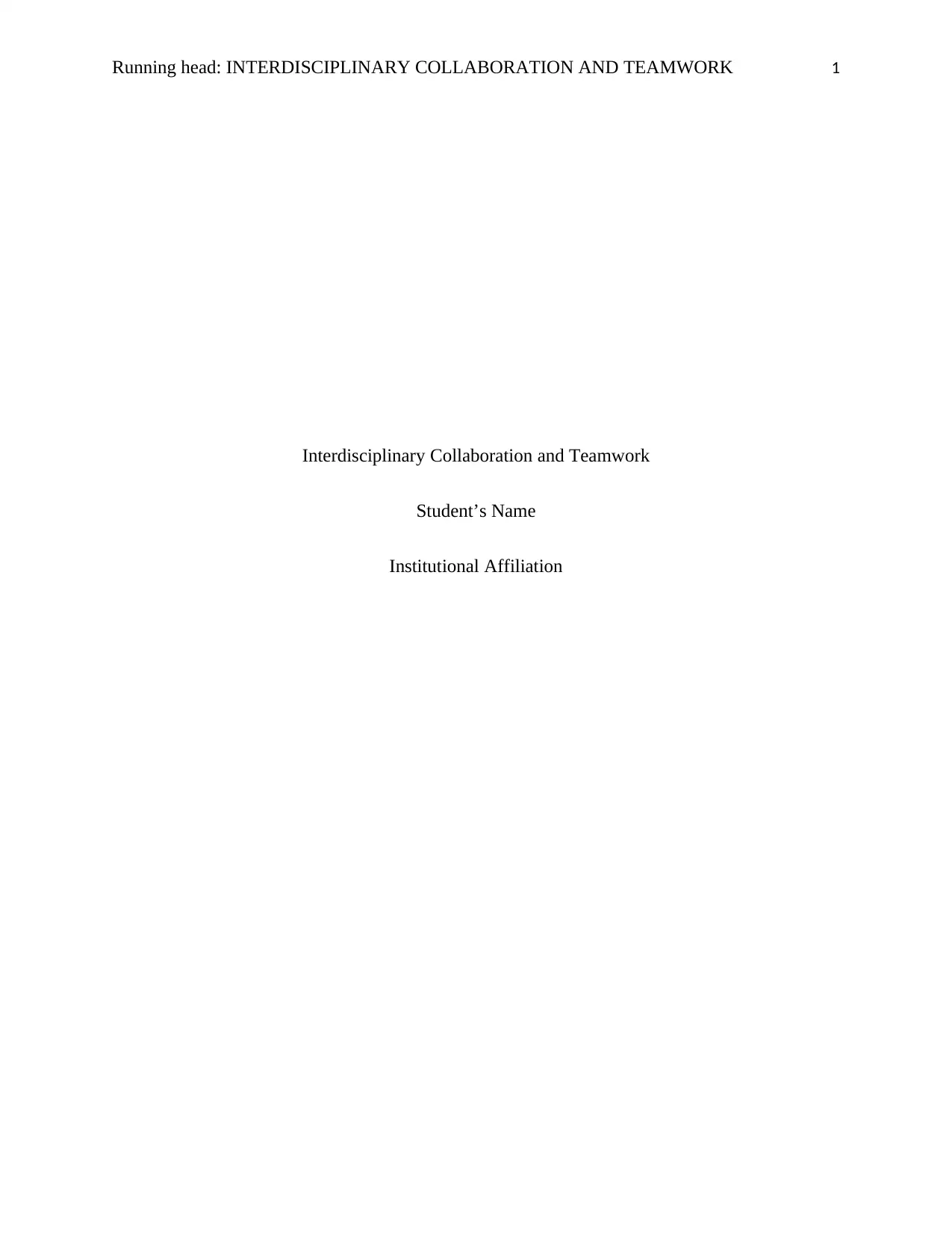Interdisciplinary Collaboration and Teamwork Report - Healthcare
VerifiedAdded on 2022/11/13
|3
|431
|88
Report
AI Summary
This report examines the significance of interdisciplinary collaboration and teamwork within healthcare environments. It highlights the challenges associated with conflicts among healthcare professionals and proposes strategies for effective resolution. The report references relevant literature, including studies by Manias (2018) and Lancaster et al. (2015), to support its arguments. It emphasizes the need for healthcare facilities to foster a collaborative environment by encouraging open communication, problem-solving, and the use of tools like "solution rooms" to facilitate conflict resolution. The report suggests that by focusing on teamwork and addressing conflicts constructively, healthcare organizations can improve patient care and overall operational efficiency.
1 out of 3






![[object Object]](/_next/static/media/star-bottom.7253800d.svg)